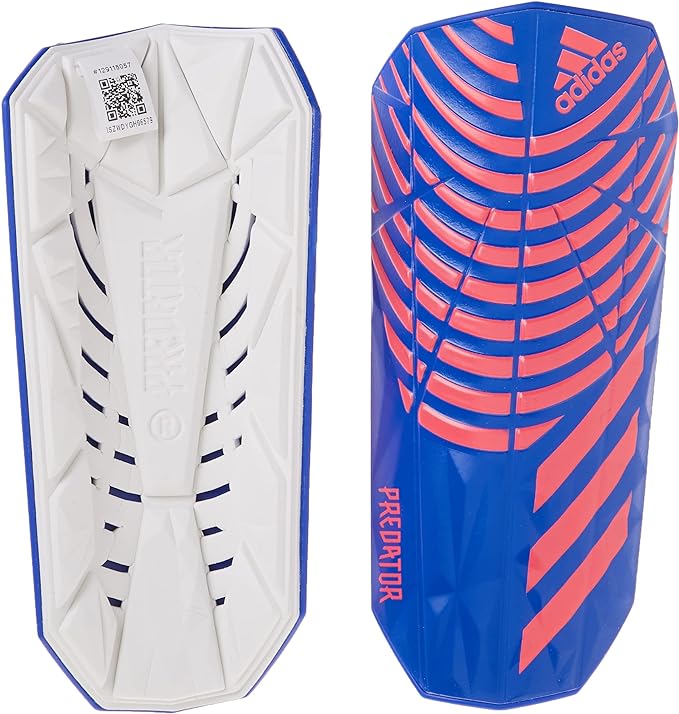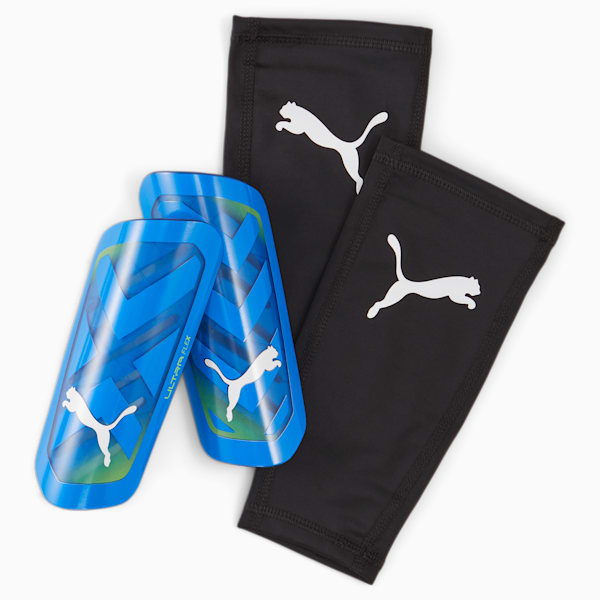Questions About Shin Pads: Laws, Regulations & What Professional Players Wear
Introduction – Questions About Shin Pads
Shin pads are an essential piece of football equipment, protecting players from the impact of kicks, tackles, and other challenges. But with so many different shin pads on the market, it can be hard to know which ones are the best.
In this post, we will look at some of the best shin pad types for football. Best how? Well, based on factors such as protection, comfort, fit, and durability. We will also answer some common questions about shin pads, such as:
-
- What do Professional Players wear on their shins?
- Why do professional footballers wear small shin pads?
- Are tiny / ‘mini shin pads’ legal?
- Is it illegal to play football without shin pads?
- Should you wear big or small shin pads?
- What shin pads should I buy?
- What are the Best Shin Pads for Football?
- Do pros wear shin pads like G-form?
What do professional players wear on their shins?
Footballers (should) wear shin pads/shin guards (they’re the same thing) to protect them from the impact of kicks, tackles, and other challenges. Shin pads are made from a variety of materials, such as plastic, foam, carbon-fiber, bamboo and composites of different materials.
How to Choose the Best Shin Pads for You
When choosing your shin pads consider:
Protection:
Shin pads should provide good impact protection. They should cover most of the front of your shin bone (tibia). Many have a hard outer layer to resist impact and a softer cushioned layer to absorb impact energy. Stiffer edges on some shin pads can cause you to find them uncomfortable because the muscles on either side of your shin bone move – but hard shin pad material doesn’t! To overcome this, shin pads can be made from sophisticated smart materials to provide excellent protection with flexibility and comfort. ALL shin pads should display they have been independently impact-tested and awarded a CE Mark or are NOCSAE-approved (U.S.A. standard).
Comfort:
Shin pads should be comfortable to wear, even for extended periods. You should look for shin pads made from lightweight and breathable materials so you won’t get hot or sweaty. This can increase the risk of you getting shin pad dermatitis. Check the skin side for loose stitching and raised or sharp edges.
Fit:
Shin pads should be snug but not tight. They should wrap around your shin bone and the front of your leg. Hold them against your shin bone and they should not rock from side to side when pressure is applied. Your lower leg muscles on either side of the tibia should be able to move freely without your shin pads pressing. You can do this when standing by moving your foot up and down at the ankle while keeping your heel on the ground. This will activate the leg muscles lying under your shin pads.
Durability:
Shin pads should be durable and able to withstand the rigours of football. Independent testing should have been done to the EN 13061:2009 CE Mark Standard or NOCSAE Standard. This ensures your shin pads perform to the required standard over repeated impacts. There’s no point having a ‘one-hit wonder’.
Why Do Professional Footballers Wear Small Shin Pads?
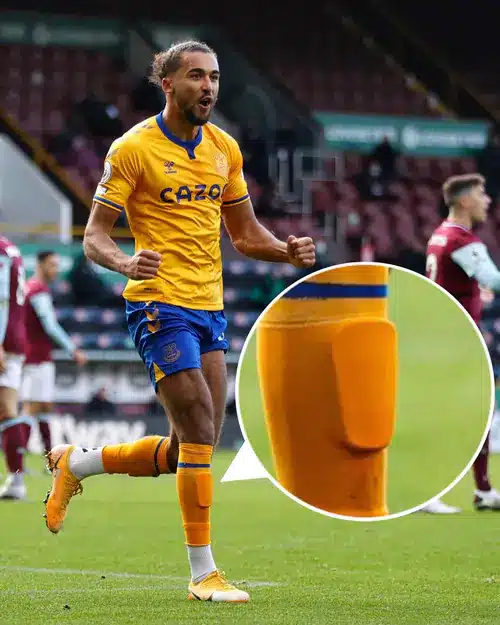
Dominic Calvert-Lewin Playing For Everton F.C.
Some professional footballers wear small shin pads because they find larger, rigid shin pads uncomfortable. Some wrongly think there’s a performance advantage. The ‘low socks, tiny shin pads’ look popularised by Jack Grealish has become a football meme which arguably reflects a lack of attention to professional detail. Small shin pads DO NOT improve range of motion or performance. Doctors involved in looking after professional players see significant injuries due to poor shin pads. These range from bone bruising, cuts and sometimes deep lacerations down to muscle. No matter how well a player THINKS they will perform in small shin pads, months of hard work can be instantly wiped out with injury. This leads to loss of conditioning, losing your place in a team and then increased risk of injury when they desperately work hard to get back in the team.
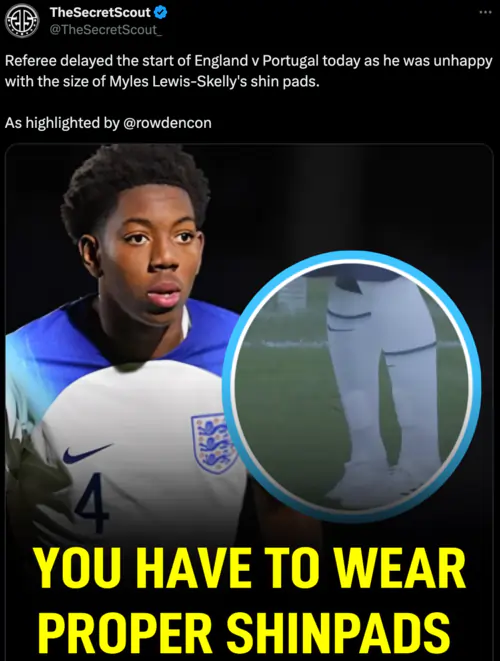
You have to wear proper shin pads
Mini shin pads do not provide adequate protection. Most haven’t been independently impact tested and are not fit for purpose. If you are concerned about protection, a long playing career, avoiding emergency hospital visits AND avoiding the disapproving frown of your medical team – choose ‘proper’ shin pads.
Football Association Rules on Shin Pads
The Football Association (FA) has strict rules on shin pads. According to the FA, shin pads must:
- Be covered entirely by socks
- Be made of a suitable material (such as rubber, plastic, or similar substances)
- Provide a reasonable degree of protection
FA referees are responsible for ensuring players wear suitable and safe football shin pads. Players who are not wearing shin pads or who are wearing shin pads that do not meet the FA’s requirements may be refused entry to the pitch or may be sent off to change their shin pads.
BBC Sport recently discussed the issue of what professional players wear and invited the International Football Association Board (IFAB) for comment. IFAB are the ‘independent guardians of the football rules of association football’ and stated it is “the responsibility of the individual player and not the referee” to wear suitable shin pads. Ironically, IFAB’s Laws Of The Game states:
“referees should apply the Laws within the ‘spirit’ of the game to help produce fair and safe matches”
“The Laws must also contribute to the safety and welfare of players”
“Accidents inevitably occur, but the Laws aim to help make the game as safe as possible, balancing player welfare and sporting fairness”
“A player must not use equipment or wear anything that is dangerous”
“The safety of the players is of paramount importance”
We argue the laws of the game set out a framework to support referees ensuring players wear suitable shin pads.
Why Are Shin Pads Important?
Shin Pads prevent injuries. Injured players can’t play or play poorly or risk career-ending injuries. The risk of being injured seems small but the effect can be huge. Why do people wear seatbelts or motorcycle helmets? The correct answer is because it’s the law but people wear protection now because they understand the risks of not wearing it.
The human leg can generate large forces when kicking or tackling. Modern football stud/cleat patterns often have sharper-edged shapes. This allows the kinetic energy from the leg to be concentrated over a small surface area. There is increasing concern modern boots can cause significant lacerations on legs and feet (especially through modern lightweight ultra-thin boots). Impact protection from these types of studs scraping along a shin is best provided by good-quality shin pads under a football sock. Yes, socks make a difference! See this excellent article on the add-on benefit of socks with shin pads.
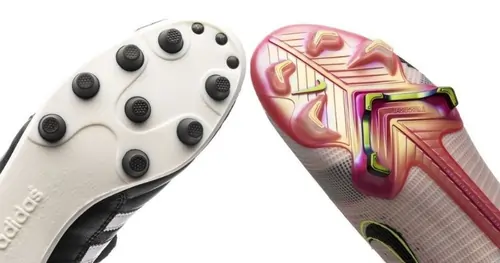
A Polyhedral Stud Pattern With Sharper Edges Can Increase Injury Risk To Other Players
Shin pads can help to protect the legs from cuts caused by modern stud patterns and even fractures. See this excellent article on the evidence for fracture prevention. Good-fitting shin pads made from durable materials that fit snugly around the leg are most effective at protecting against such injuries.
Professional Players and Mini Shin Pads
Some professional players seem to be wearing tiny (or no) shin pads. Unfortunately, many professional referees don’t seem to feel they can do anything about this. The issue has been featured in the press such as this BBC Sport article. Elite football is refereed and dangerous challenges are readily punished, especially with VAR! Professional football involves rapid, accurate and frequent passing to players in space reducing the frequency of direct tackling. As a result of this and the agile nature of elite players injuries due to improper shin pads are less common but medical teams see them AND will often have a gentle moan at their players for not wearing proper protection. You will see injuries are more often at less competitive levels with less proficient players and less well-officiated amateur matches.
Is it illegal to play football without shin pads?
It is not ‘illegal’ to play football without shin pads.
It is not ‘illegal’ to play football with ‘mini shin pads’ BUT it is arguably a breach of the laws of the game.
It is illegal i.e. a breach of U.K. law to sell or distribute shin pads that are not CE Marked where a CE Mark standard exists…as it does for Football Shin Pads. Football Shin Pads are regulated under the ‘Personal Protective Equipment (Enforcement) Regulations 2018’ and the required standard is listed here.
‘Mini shin’ pads do not provide enough protection. Most have not passed independent safety testing and don’t have a CE Mark. Hence, selling or distributing them breaks the law. As they don’t provide enough coverage, they are unsafe. They’re dangerous to use as protection and players wearing them should know it. A player wearing ‘mini shin pads’ is more likely to suffer injuries in the event of a kick, tackle, or other challenges.
What are the best shin pads for football?
The answer depends on:
- Your budget – why waste money on expensive shin pads just to play once a year?
- How often you play – this influences the points above and below
- Washable – some are wiped clean and some have fabrics or porous spongy foams that can absorb sweat and if not washed can smell terrible. Never leave sweaty shin pads in an unventilated and warm place! Clean them as soon as you can, it may even be easier to take them into the shower with you to clean after playing. Leave them in a warm dry place NOT a heater/radiator as this can cause material degradation.
- Size – your height determines how big a shin pad you need. It’s pointless risking injury with a coin-sized shin pad. Ideally, an area 1 hand’s width above the ankle to 1 hand’s width below where the kneecap (patella) ends should be covered. The width of the shin pad should protect the ridge of your shin bone (tibia), a few centimetres to the outside and all of the hard bony parts on the inside of the tibia. This along with the ridge are the most vulnerable parts to injury as there’s little soft tissue to take any impact.
- Appearance – this shouldn’t matter but of course it does. If players feel embarrassed wearing a shin pad, they’re likely to give up wearing it. Part of enjoying football is the pleasure of a nice kit: a good pair of boots that makes you feel like Jude Bellingham, some white tape on your wrist (why do players do that?!) and a cool-looking kit bag. So a pair of shin pads that look good and feel good should help you play better.
Questions About Football Shin Pads: Anything Else?
Oh yes 🙂
- Comfort – this is a function of weight, fit, breathability and materials used. An uncomfortable shin pad that keeps moving in the sock and leaves you sweaty is not ideal. Always buy a pair on recommendation or after you have tried them. If you know professionals are using a pair and it’s made by a reputable company, this adds to buyer confidence.
- Protection – shin pads are a protective item. In the U.K. and E.U., they are Category II Personal Protective Equipment (PPE). There are regulations governing PPE and for shin pads, the U.K. and E.U. require CE Mark standard EN 13061 to be awarded by a Government-appointed independent organisation (Notified Body). Look for the CE Mark on your shin pads. With this you know they have been independently impact-tested in a laboratory to make sure they’re safe and effective. The U.S.A. requires a similar standard called NOCSAE.
- Durability – any material with foam rubber or spongy material will slowly degrade over time. Hard plastics can also deteriorate but generally retain their impact-absorbing qualities more consistently.
How Often Should Shin Pads Be Replaced?
As a word of warning, caution should be exercised over carbon-fibre and other rigid plastics. Occasionally repeated impacts can cause weakening and then the material can break without warning under impact. Carbon-fiber is an excellent material. Long-term durability after repeated impacts is known to reduce. Hence, inspect your shin pads regularly and discard if damaged or worn. We would recommend replacing them every 1-3 seasons depending on use.
Of course, if yours are made from an advanced smart-material that’s been tested for over 10,000 life-changing impacts then you are lucky enough to have something that could last your whole footballing career!
The Best Football Shin Pads
Below is not intended to be a comprehensive list but we do like the following:
Nike Mercurial Lite Shin Pads
These football shin pads are lightweight and comfortable, with a hard outer shell and foamy inner part for comfort. The Mercurial Lite has been around for several years and is commonly worn by amateurs and professionals alike. They provide excellent protection with comfort, are lightweight and come in lots of different colour schemes. They often come with some Nike shin pad sleeves, an excellent environmentally responsible alternative to disposable sock tapes or underwrap.
Mitre Aircell Shin Pads
A budget option but don’t let that put you off. Mitre’s Aircell football shin pad has been around for a very long time. These football shin guards are lightweight and comfortable, with a perforated shell that allows for excellent airflow without compromising on protection. There are a few variations including one with an ankle stocking and stirrup to prevent the shin pad riding up the leg. Some without this have velcro straps to aid placement and others have just the shin pad. In our opinion, this is an understated design classic.
Adidas Predator League Shin Pads
These football shin pads offer excellent protection, with a hard shell and a padded backing. They are also a good option for players who are looking for a shin pad that is durable and long-lasting. Often provided with a pair of sleeves, there have been some negative reviews about the durability of these. However, the shin pads are a strong offering and are available to buy in a variety of sizes and colours. You can buy cheaper shin pads, but the Adidas Predator brand is strong and sought after.
Puma Ultra Flex Shin Pads
These shin pads are lightweight and flexible, with a hard yet giving shell that provides good protection. They are a good option for players who are looking for a shin pad that does not restrict their movement given the softer foam backing. They appear to be quite breathable and come with sleeves.
Do Pros Wear Shin Pads Like G-Form?
Some professional footballers wear G-form football shin pads. These are made from a soft and flexible foam material called SmartFlex. Based on Poron XRD this is a flat, thick, foam-like material that hardens on impact. This makes the G Form shin pads lightweight to wear whilst still providing good protection.
A few professional footballers wear G-form shin pads. Many prefer to wear shin pads with a hard shell, as they feel that these shin pads are less sweaty, and bulky and provide better protection. We know what professional players wear, and know many who dislike a tight sleeve that features on many G Form shin pads and so they choose to cut it off before wearing.


 A budget option but don’t let that put you off. Mitre’s Aircell football shin pad has been around for a very long time. These football shin guards are lightweight and comfortable, with a perforated shell that allows for excellent airflow without compromising on protection. There are a few variations including one with an ankle stocking and stirrup to prevent the shin pad riding up the leg. Some without this have velcro straps to aid placement and others have just the shin pad. In our opinion, this is an understated design classic.
A budget option but don’t let that put you off. Mitre’s Aircell football shin pad has been around for a very long time. These football shin guards are lightweight and comfortable, with a perforated shell that allows for excellent airflow without compromising on protection. There are a few variations including one with an ankle stocking and stirrup to prevent the shin pad riding up the leg. Some without this have velcro straps to aid placement and others have just the shin pad. In our opinion, this is an understated design classic.